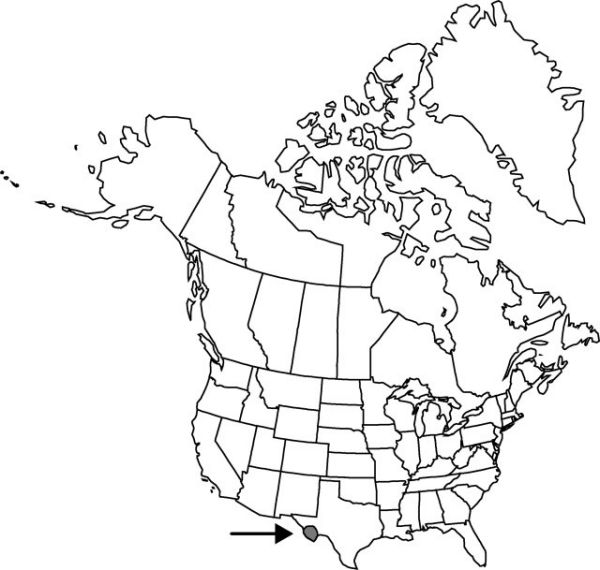Difference between revisions of "Allium coryi"
Contr. W. Bot. 17: 21. 1930.
FNA>Volume Importer |
FNA>Volume Importer |
Revision as of 19:32, 24 September 2019
Bulbs 1–5, without basal bulbels, ovoid, 1–1.8 × 0.7–1.5 cm; outer coats enclosing 1 or more bulbs, brown, reticulate, cells fine-meshed, open, fibrous; inner coats whitish or brownish, cells intricately contorted, walls not sinuous. Leaves persistent, green at anthesis, 3–5, sheathing; blade solid, flat, channeled, 10–30 cm × 1–3 mm, margins entire. Scape persistent, solitary, erect, ± terete, 10–30 cm × 1–3 mm. Umbel persistent, erect, compact or ± loose, usually 10–25-flowered, hemispheric-globose, bulbils unknown; spathe bracts persistent, 2–3, 1-veined, ovate, ± equal, apex acuminate. Flowers campanulate to ± stellate, 6–9 mm; tepals spreading, bright yellow, sometimes tinged with red, fading with age and sometimes upon drying, ovate to lanceolate, ± equal, becoming papery and rigid in fruit, margins entire, apex obtuse or acute, midribs somewhat thickened; stamens included; anthers yellow; pollen yellow; ovary crestless or rarely crested; processes 6, central, low, sometimes distinct or connate in pairs across septa, rounded, margins entire; style linear, ± equaling stamens; stigma capitate, unlobed or obscurely lobed; pedicel 5–20 mm. Seed coat shining; cells smooth. 2n = 14.
Phenology: Flowering Apr–May.
Habitat: Rocky slopes and plains, mountains
Elevation: 800–1400 m
Discussion
Allium coryi is known only from western Texas.
Selected References
None.
